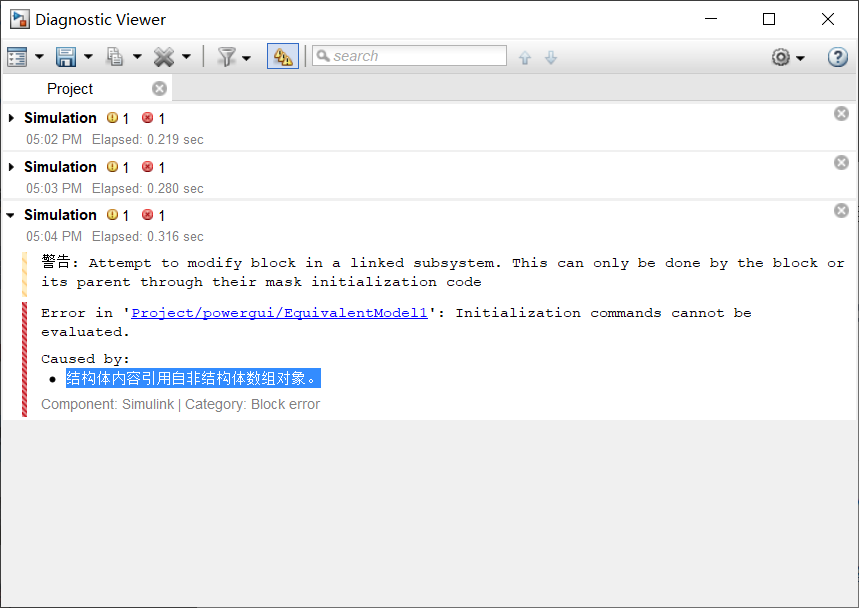
Select Phase if you want to program the time variation of the phase. Select Amplitude if you want to program the time variation of the amplitude. Select None if you do not want to program the time variation of the source parameters. Time variation: Specify the parameter for which you want to program the time variation. Positive-sequence: The amplitude in volts RMS phase-to-phase, the phase in degrees, and the frequency in hertz of the positive-sequence component of the three voltages. In addition, two harmonics can be programmed and superimposed on the fundamental signal. You can program the time variation for the amplitude, phase, or frequency of the fundamental component of the source. Three Phase Programmable source: Use this block to generate a three-phase sinusoidal voltage with time-varying parameters. You can have a maximum of one Powergui block per model. You can place it anywhere inside subsystems for your convenience its functionality will not be affected.

The Powergui block is necessary for simulation of any Simulink model containing SimPowerSystems blocks.

SimPower Systems models can be used to develop control systems and test system-level performance. Harmonic analysis, calculation of total harmonic distortion (THD), load flow, and other key electrical power system analyses are automated. The libraries offer models of electrical power components, including three-phase machines, electric drives, and components for applications such as flexible AC transmission systems (FACTS) and renewable energy systems. INTRODUCTION:SimPower Systems™ provides component libraries and analysis tools for modeling and simulating electrical power systems. To understand the behavior and characteristics of SIMPOWER SYSTEM.It does not store any personal data.LAB EAXPERIMENT NO: 2 INTRODUCTION TO SIMPOWER SYSTEM (PLO: 5 (Modern Tool Usage)) The cookie is set by the GDPR Cookie Consent plugin and is used to store whether or not user has consented to the use of cookies.

The cookie is used to store the user consent for the cookies in the category "Performance". This cookie is set by GDPR Cookie Consent plugin. The cookie is used to store the user consent for the cookies in the category "Other. The cookies is used to store the user consent for the cookies in the category "Necessary". The cookie is set by GDPR cookie consent to record the user consent for the cookies in the category "Functional". The cookie is used to store the user consent for the cookies in the category "Analytics". These cookies ensure basic functionalities and security features of the website, anonymously. Necessary cookies are absolutely essential for the website to function properly. You give “dx/dt” to the solver and the solver gives you back “x”. A continuous state is integrated by the Simulink solver. The Simulink engine does nothing except storing the value. What is the difference between discrete and continuous in Matlab?Ī discrete state is stored at one time steps and retrieved later.

double tap Powergui and select FFT Analysis. double tap the scope and go to Logging and select Log data to the workspace and select Structure with Time and click on Apply. Untick the Single simulation output and click on Apply. Go to model configuration parameter and select Data Import/Export. Where is Powergui in Matlab?ĭirect link to this answer I found the “powergui” block in the library Simscape/Power Systems/Specialized Technology/Fundamental Blocks.
#POWERGUI MATLAB SIMULINK INSTALL#
Select all of the Simulink related entries that you want to install, and click through to install them. You will be given a list of all of the products and toolboxes you have purchased for your license. To install just the Sim* related products: Click for Custom installation.


 0 kommentar(er)
0 kommentar(er)
